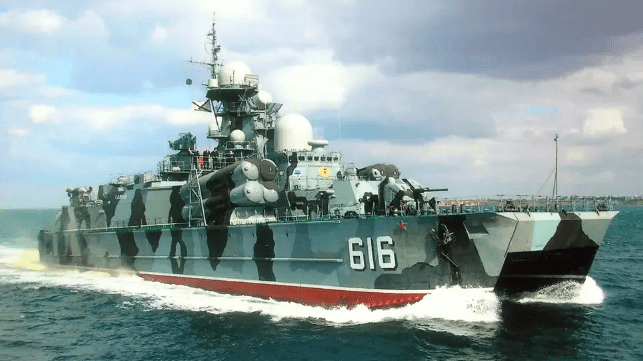Ukraine Claims to Have Hit a Rare Russian Super-Ship

Thursday night's strikes on Sevastopol badly damaged a Russian landing ship and a Kilo-class submarine, and it is possible that a third vessel was hit as well. Ukraine claims to have attacked and damaged one of the rarest vessels in the world - a Bora-class missile boat, one of two surface effect ships (SES) in the Russian Navy and one of about one dozen in existence.
Russia has acknowledged the missile strike on the Sevastopol shipyard complex that damaged two vessels last week, and has confirmed one attempted drone boat attack in the Black Sea. The Russian Ministry of Defense claimed last week that the drone attack was unsuccessful, but Ukrainian defense sources have told media in Ukraine (and the West) that one of the drones reached its target - the Samum, a missile boat with the speed of a Littoral Combat Ship and the armament of a destroyer.
An image of the Samum re-entering Sevastopol under tow has circulated on social media, and appears to show the vessel trimmed by the stern (below). This has prompted speculation that it may have sustained damage, though the vessel has often been photographed in operation in a similar state of trim (top).
According to naval analyst H.I. Sutton, the tugboats are not a clue in and of themselves, as the Russian Black Sea Fleet often uses a close tug escort for warships moving in and out of the Sevastopol harbor.
??Photo of towing a small ????????Russian missile ship on an air cushion "Samum" which was attacked by ????????Ukrainian naval drones. pic.twitter.com/fzr0hVvKgZ
— ????????Ukrainian Front (@front_ukrainian) September 16, 2023
Samum is a Bora-class surface effect ship, a rare hybrid between a hovercraft and a catamaran. The twin hulls provide most of the enclosure for the vessel's air cushion, while hovercraft-like skirts fore and aft take care of the rest. This arrangement is fuel-hungry but allows the vessel to travel at unusually high speeds. This vessel class is also known as the "sidewall hovercraft," and it has been used in the design of several high-speed naval vessels in the U.S., Russia, North Korea and Norway - including Norway's Skjold-class corvettes, the world's fastest combat ships.
The Soviet Navy ordered two Bora-class boats at the very end of the Cold War. Like the Ekranoplan, the Bora-class was designed as a high-performance platform for defending against NATO surface forces. Into the frame of a 200-foot patrol boat, Soviet engineers put a combined gas turbine and diesel powerplant rated at more than 60,000 horsepower, plus eight Moskit (NATO reporting name Sunburn) supersonic antiship missiles. This is the same armament configuration found on some full-size Russian Navy destroyers, but in a far smaller and faster package.
